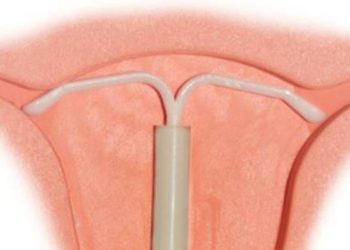LARC use increased from 2009-2012
1. Use of long-acting reversible contraceptive (LARC) methods increased in U.S. women from 2009 to 2012.
2. Increase in IUD use drove this trend, while implant use remained low.
Evidence Rating Level: 3 (Average)
Study Rundown: LARC methods are the most effective forms of birth control currently available and include intrauterine devices (IUDs) like Mirena and Paragard and subdermal implants like Nexplanon. In the early 2000s, usage rates were as low as 2.4 percent. But in recent years, they have gained national media attention and popularity, owing to a combination of increased diversity of design, a growing body of research efficacy, safety and tolerability, and the contraceptive mandate of the Affordable Care Act (ACA), which requires ACA plans to cover LARCs. In this study, researchers used data from the most recent two installments of the National Survey of Family Growth, a large, nationally representative survey of reproductive aged women, to assess changes in LARC use.
From 2009 to 2012, the prevalence of LARC use among U.S. female contraceptive users increased significantly, mainly due to increased IUD use. Strengths included a large, nationally representative sample and adjustment for a wide range of demographic characteristics. As data from the National Survey for Family Growth is only available through 2012, these findings do not assess the impact the ACA contraceptive mandate. When such data is available, a repeat of this analysis before and after implementation of the contraceptive mandate would inform the impact of the national policy changes on LARC uptake.
Click to read the study in Obstetrics & Gynecology
Click to read associated editorial in Obstetrics & Gynecology
Relevant Reading: Changes in use of long-acting contraceptive methods in the United States, 2007–2009
In-Depth [cross-sectional survey]: Researchers compared results from the 2008-2010 (n =6428) and 2011-2013 (n = 5601) National Survey of Family Growth, a nationally representative survey of women aged 15-44 years to assess fertility behaviors and health. The primary outcome was prevalence of LARC use among all contraceptive users. Secondary outcomes included demographic characteristic predictive of LARC use and factors associated with discontinuation.
From 2009-2012, the prevalence of LARC use among U.S. women on contraception increased from 8.5% to 11.6% (p = 0.006). IUD use drove the trend (7.7% to 10.3%, p < 0.01) while implant use remained low and unchanged. Groups with the most significant increases in LARC uptake included Hispanic females (8.5% to 15.1%, p < 0.01), private insurance holders (7.1% to 11.1%, p < 0.01), and nulliparous women (9.2% to 12.4%, p < 0.01).
Image: PD
©2015 2 Minute Medicine, Inc. All rights reserved. No works may be reproduced without expressed written consent from 2 Minute Medicine, Inc. Inquire about licensing here. No article should be construed as medical advice and is not intended as such by the authors or by 2 Minute Medicine, Inc.






![Adverse pregnancy outcomes associated with thrombophilias [Classics Series]](https://www.2minutemedicine.com/wp-content/uploads/2015/07/Classics-2-Minute-Medicine-e1436017941513-75x75.png)
